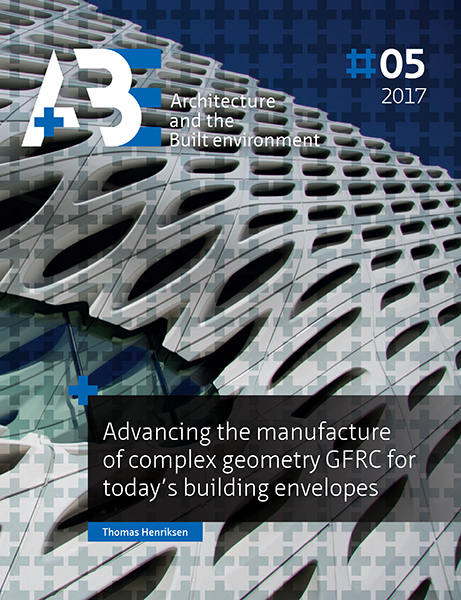Developing a solution for the sprayed concrete method and proposing automated process.
DOI:
https://doi.org/10.7480/abe.2017.5.3642Abstract
Resolving the challenges of advancing thin-walled glass fibre reinforced concrete (GFRC) requires a novel, more automated digital design and manufacturing process that meets the requirements of present demands for thin-walled GFRC panels. The design, optimisation and manufacture of moulds using existing approaches is subject to many limitations and constraints that result in feedback loops between each stage of the design and manufacturing processes. This precludes the efficient and fully automated digital design and manufacture of complex geometry thin-walled GFRC panels. The proposed mould system overcomes many of these constraints, and when combined with new software plug-ins, will be capable of digitally resolving the limitations or constraints that interrupt each key stage of the design and manufacturing processes. These plug-ins have been characterized to provide a seamless interface between software and hardware with minimal delays caused by design feedback loops to allow a fully automated digital design process to be realised. The impact of the new mould on this novel process is analysed and further research necessary to advance the process is identified.

